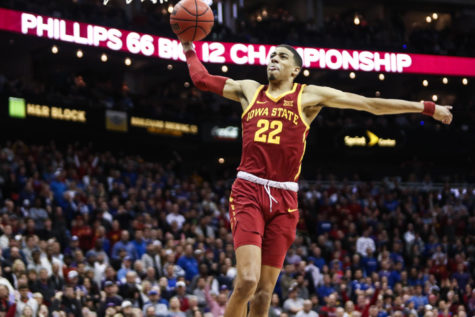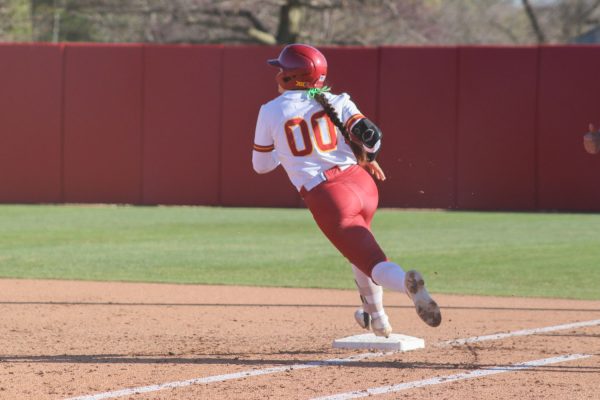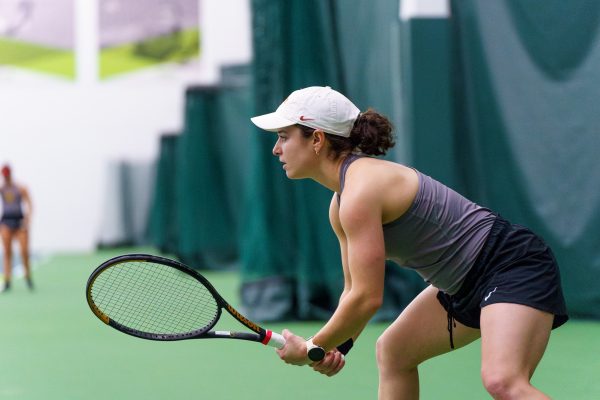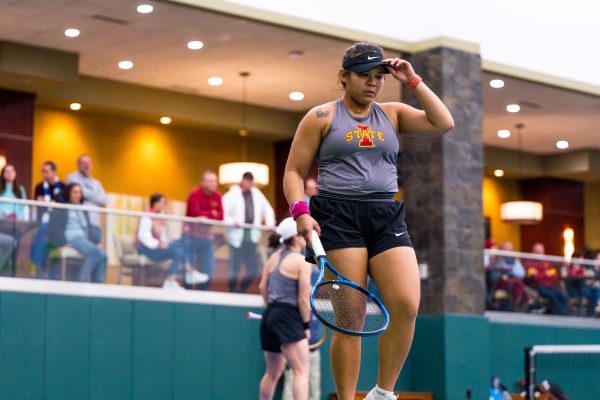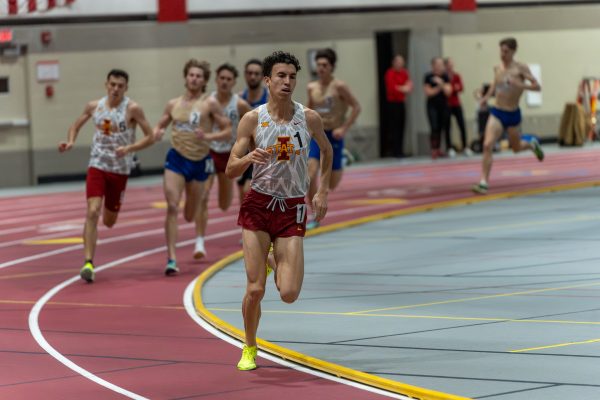Defense, shot selection emphasized ahead of Kansas State game
January 15, 2016
When a wild animal is backed into a corner, one of its first instincts is usually to fight and find its way out.
The same could be said for both the ISU (12-4, 1-3 Big 12) and Kansas State (11-5, 1-3 Big 12) men’s basketball teams, which will meet up on Saturday with hopes of finding a way out of their respective slumps.
Both have fallen to the bottom half of the Big 12 standings and are in desperate need of a win to get back on track before conference heavyweights such as Kansas, Oklahoma and West Virginia leave them behind.
“They’re obviously trying to find their niche just like we are in this league,” said senior Georges Niang. “They’re hungry for a win, so I would expect nothing less than their best game.”
Iowa State will certainly watch film and scout Kansas State, but the Cyclones are taking a good, long, hard look at themselves first and foremost.
The first and perhaps most obvious issues are Iowa State’s defensive struggles. The Cyclones gave up 94 points in the last two games, pointing to significant problems on that side of the ball.
One potential issue is Iowa State’s lack of depth. With only seven players in the regular rotation, it is feasible that the defensive woes could be contributed to fatigue. Niang doesn’t think depth is a problem at all.
“I would say [it’s] sometimes more [of] a lack of focus,” Niang said. “If we’re not focusing, our defense is really bad.”
Five ISU starters are averaging at least 29 minutes per game, but Monté Morris also doesn’t think depth and fatigue are issues. Despite playing a team-high 36.5 minutes a game, Morris said he feels fine and hasn’t been to the trainer’s room in nearly two weeks.
So if it’s not fatigue, then what is it? Well, ISU coach Steve Prohm said the Cyclones’ defensive woes might have more to do with offense than defense.
How?
“Everybody is talking about the defense right now,” Prohm said. “How much is it just against straight half-court defense that they’re scoring? Or are they scoring in transition? Are they scoring off bad offense that’s leading to transition?
“Our half-court defense, when it is set, is not bad. It’s not unbelievable, but that’s not what’s killing us.”
Sometimes the best defense is a good offense. That old cliché may be true for Iowa State, too.
Prohm said he wants his team to take fewer quick shots. Too often, Iowa State will take a shot just 10 seconds into the shot clock, and miss, which leads to transition opportunities for opponents.
“Go watch all the games and look what quick shots lead to,” Prohm said.
The answer is transition buckets. Instead, Prohm offered a few simple adjustments like taking some time and getting further into the shot clock.
“Let’s drive the ball,” Prohm said. “Let’s make the extra pass. We can get 3s. We don’t have to take so many early [in the shot clock] 3s. We can get some late 3s.”
This solution prompts another question, though. Iowa State has always played at a fast pace in recent years. Some of these guys don’t know how to play any other way. If you slow down too much, aren’t you taking away what makes the offense so potent?
“That’s always been our style,” Morris said. “It’s hard to say. Here and there it is [bad] shot selection.”
Morris said it’s about learning when to pick and choose your spots.
“Every game is going to be different, he said. “We can talk shot selection, but at Kansas State we might have to play fast paced to win that game. I think it’s just the feel of the game.”







